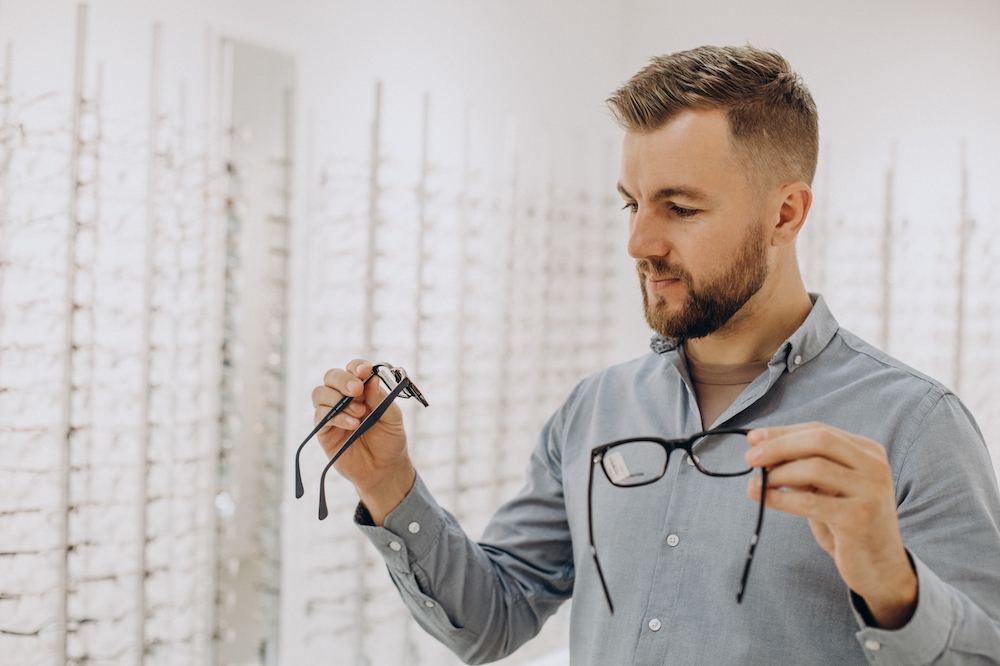
Navigating through the process of getting glasses can seem like a daunting task, especially if it's your first time. However, with the right guidance, it can be a straightforward journey. As someone who's been through this process numerous times, I'm here to help guide you from start to finish. From understanding the need for prescription glasses, to choosing the right ones for your specific needs, to caring for them once you receive them - this article will cover it all.
Understanding the Need for Prescription Glasses
The need for prescription glasses often arises when you experience changes in your vision. These changes could be mild, such as difficulty in reading small print, or more severe, like blurry vision or constant headaches. Often, these symptoms are a result of conditions like myopia (nearsightedness), hyperopia (farsightedness), astigmatism, or presbyopia.
If you're experiencing any vision-related issues, it's crucial to consult with an optometrist or ophthalmologist. They can conduct a comprehensive eye examination to determine the exact cause of your vision problems and whether you need prescription glasses.
The Comprehensive Eye Examination
The comprehensive eye examination is an essential step in the process of getting glasses. This exam involves a series of tests to evaluate your visual acuity and eye health. Your eye doctor will use various instruments, aim bright lights directly at your eyes, and request you to look through several lenses. Each test during the examination is designed to evaluate a different aspect of your vision or eye health.
The comprehensive eye examination isn't just about determining whether you need glasses. It's also an opportunity for the eye doctor to check for eye diseases like glaucoma, cataracts, or age-related macular degeneration. These diseases often have no early symptoms, so regular eye exams are crucial in detecting them early and managing them effectively.
Choosing the Right Prescription Glasses
Choosing the right prescription glasses is a critical step in the process of getting glasses. It's not just about selecting a frame that suits your face. It's also about ensuring the lenses correct your vision properly, so you can see clearly and comfortably.
Understanding your prescription is key to choosing the right glasses. Your prescription provides precise measurements for your lenses, ensuring they correct your vision problems. It may include terms like 'OD' (oculus dextrus) and 'OS' (oculus sinister), which refer to your right and left eye respectively. It'll also contain numbers representing the power of the lens needed to correct your vision.
Understanding Your Prescription
Understanding your prescription can seem like decoding a complex scientific formula. But, with some basic knowledge, you can easily interpret it. The first number on your prescription represents your lens power in diopters. A minus sign before this number indicates myopia, while a plus sign indicates hyperopia.
If you have astigmatism, your prescription will also include a 'cylinder' number representing the lens power needed to correct it. Additionally, there may be an 'axis' number, which indicates the orientation of your astigmatism in degrees.
Selecting Your Frames and Lenses
Once you understand your prescription, the next step is selecting your frames and lenses. There's a wide variety of frames to choose from, including metal, plastic, or rimless styles. When selecting frames, consider your face shape, skin tone, lifestyle, and personal style. Also, your frames should be comfortable and fit well.
When it comes to lenses, you have several options depending on your specific needs. For instance, if you have a high prescription, you might opt for high-index lenses that are thinner and lighter. Or, if you spend a lot of time outdoors, you might choose photochromic lenses that darken in response to sunlight.
Receiving and Adjusting Your New Glasses
After selecting your frames and lenses, the next step in the process of getting glasses is receiving and adjusting them. When you receive your new glasses, ensure they fit correctly. The frames should rest comfortably on your nose and ears, and the lenses should align with your pupils. If necessary, your eye care professional can make adjustments to ensure a proper fit.
It might take some time to adjust to your new glasses, especially if it's your first pair or if your prescription has changed significantly. Initially, you might experience some slight dizziness or a 'fishbowl' effect. However, these symptoms should subside as your eyes and brain adjust to the new prescription.
Caring for Your New Glasses
Once you've adjusted to your new glasses, it's essential to take proper care of them. Always use a lens cleaning solution and soft cloth to clean your glasses. Avoid using harsh chemicals or abrasive materials, as they might damage the lenses. Also, store your glasses in a protective case when not in use to prevent scratches or damage.
Regularly check your glasses for any signs of wear and tear. If you notice any changes in your vision or comfort, consult your eye care professional. They can check your glasses for proper alignment and fit, and update your prescription if necessary.
Conclusion
The process of getting glasses from start to finish involves several steps, from understanding the need for prescription glasses to caring for them once you receive them. While it might seem daunting at first, with the right guidance, it can be a straightforward and rewarding journey.
For more information on the process of getting glasses from start to finish, visit Monroe Vision Associates at our office in Monroe Township, New Jersey. Please call (609) 604-6400 to discuss any questions with our team of experts or to schedule an appointment today.







